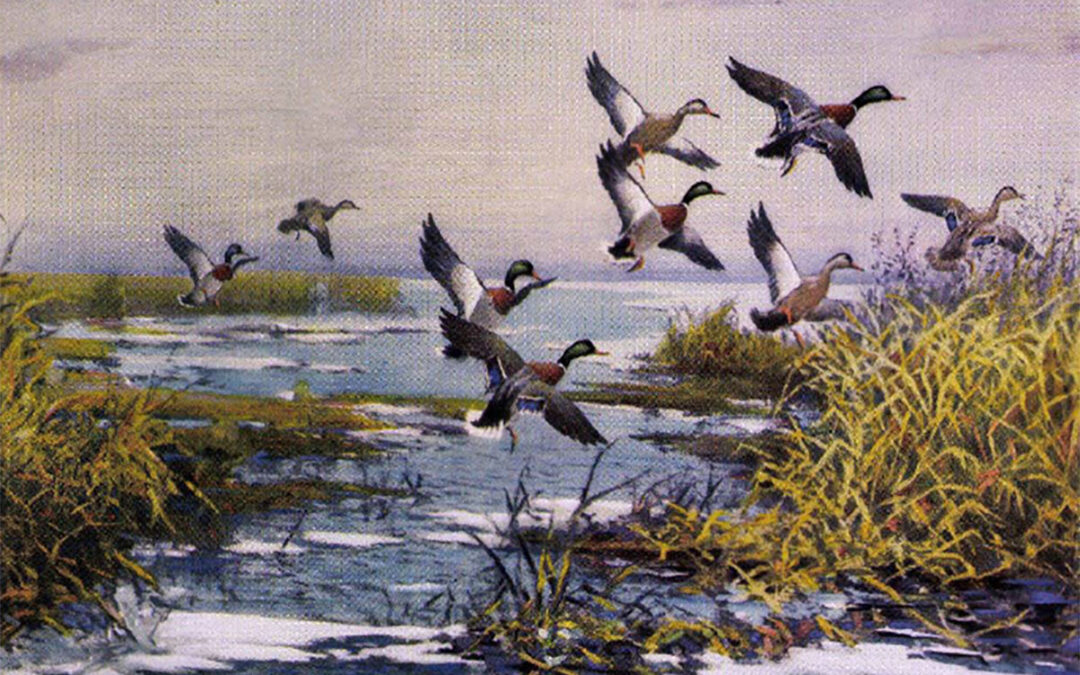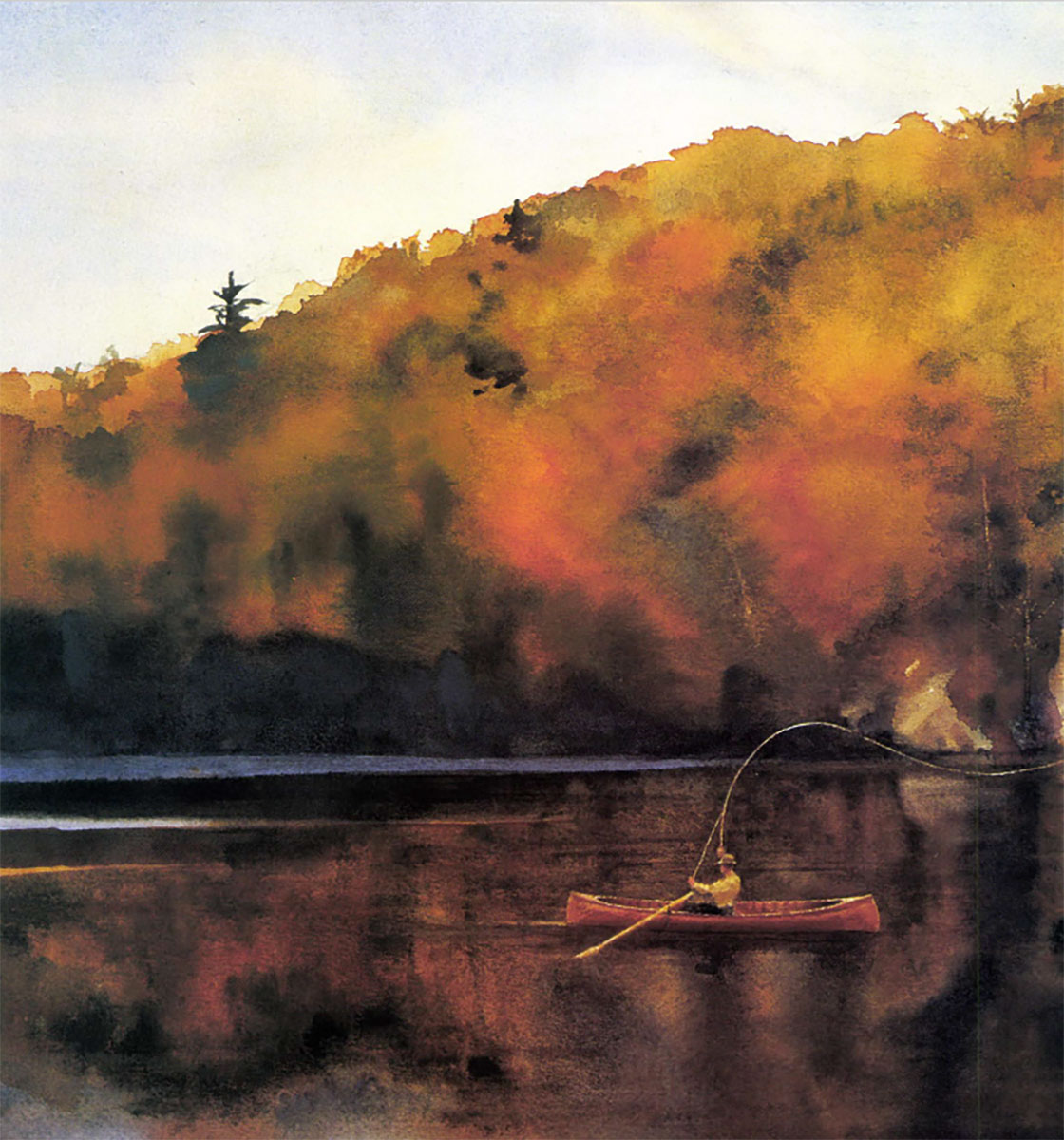Derrydale. To American sportsmen the name brings to mind handsome, leather-bound, strikingly illustrated books and prints that convey the essence of the sporting experience.
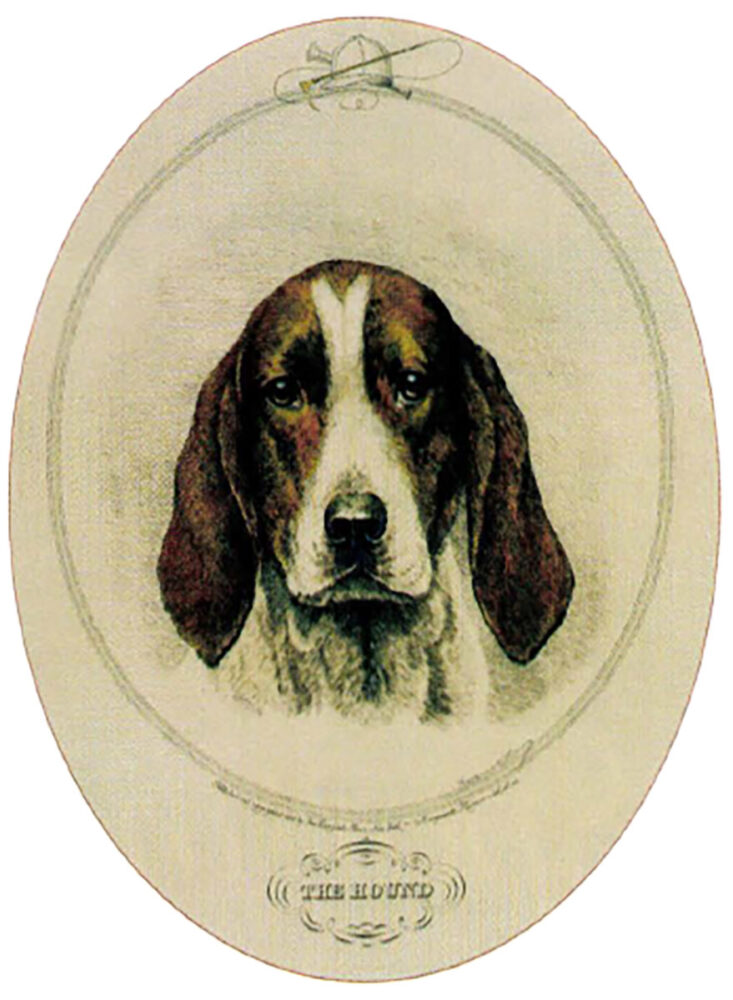
The Hound by Marguerite Kirmse reproduced courtesy of The Sporting Gallery and Bookshop in New York.
Eugene V. Connett III founded The Derrydale Press in 1926, “to produce a group of books on contemporary American sport which, because of their beauty, would be preserved instead of discarded in time … and to publish a series of hand-colored prints on rag paper which would give a true and permanent picture of contemporary sporting in this country.”
After his graduation from Princeton in 1912, Connett wrote numerous articles for the leading sporting periodicals and a book, Wing Shooting and Angling, published by Scribner’s in 1922. His principal interests at the time were collecting sporting books and art, as well as hunting and fishing. And so, in 1926 Connett decided to sell his interest in the family business and to invest everything he had — money, time, talent and energy in The Derrydale Press, a venture that under his single-handed guidance would publish the finest sporting books and prints ever produced in America.
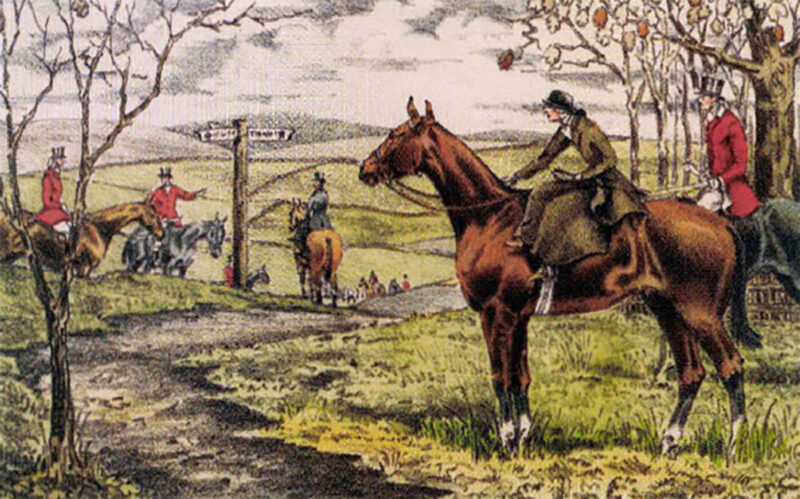
Created by artist Edward King, Diana Goes Hunting features four hand-colored stone lithographs produced by Derrydale in 1930. These prints are in the collection of Shelly Spindel.
The Derrydale Press would not be just another publishing house, but an enterprise with a mission: To create works of the highest quality for the enjoyment of Connett’s contemporaries and their descendants as well. He was convinced that there was a sufficient number of American sportsmen who would purchase expensively made books and prints to enable him to make a modest profit. For Connett, however, the greatest reward was not money, but the satisfaction of having produced works of incomparable quality.
In 1936, Connett wrote: “Neither the authors, artists nor publisher have profited to the extent they might have, if they had turned their energies to producing other types of publications; and I believe the owner of Derrydale sporting books and prints can look upon them not only as pleasant and perhaps even valuable things to possess, but also as things that have been produced by a group of true sportsmen with a real and worthwhile ideal before them.”
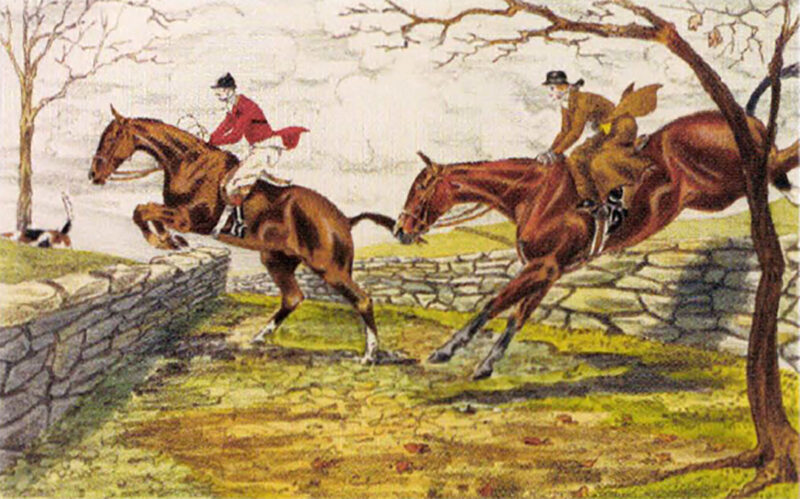
Diana Goes Hunting series.
Connett’s customers were members of an elite society — Ivy League graduates, men who had inherited or earned wealth and position, men who had the leisure time and the inclination to pursue the sporting activities of gentlemen. Connett shared their interests, for he was a member of their society, to the manor and to the manner born.
Beginning in 1926, and continuing for a span of 15 years, Derrydale published 167 books. Thirty were privately printed, for Connett sought the business of assisting authors in the design, production and marketing of their books. All other titles were selected by Connett. ”There has never been an advisory board to guide and assist in the choice of books and prints issued by The Derrydale Press,” he wrote. “I have assumed this responsibility personally, because the objectives I had in view when I started the Press were so definite in my mind.”
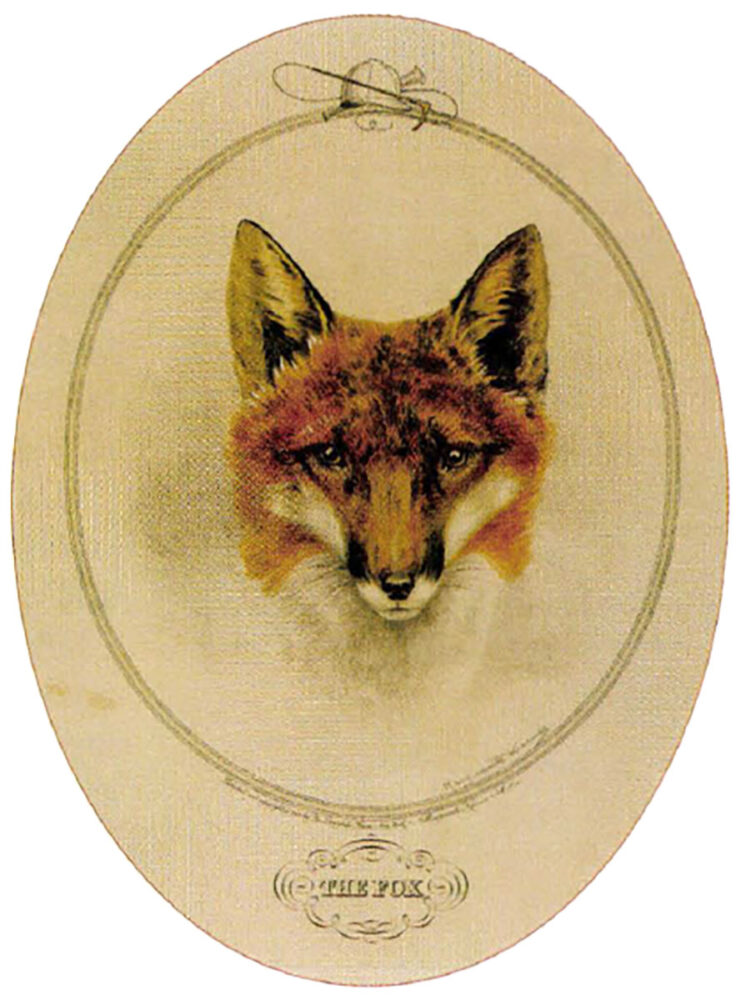
The Fox
Connett’s second objective was to publish a series of prints depicting contemporary sport. “I have have adopted the finest imported handmade rag papers for our prints,” he noted. “All impressions are pulled by hand from copper plates either etched by the artist or Gravure [a printing process requiring a team of skilled craftsmen]. These impressions are then colored by hand with the finest watercolor paints. In time these prints will assume the same lovely characteristics we so admire in English prints of a century ago, for they have been produced by exactly the same means.”
Derrydale was able to achieve such high quality because Connett rigorously controlled every step in a print’s production. He commissioned works from the most talented sporting artists of his time: Roland Clark, William Schaldach, Lynn Bogue Hunt and Arthur B. Frost for waterfowl and upland game shooting; Paul Brown and Franklin Voss for equestrian sports; Ralph Boyer and W. Goad by Lawrence for flyfishing; Gordon Grant for yachting; Edwin Megargee and Marguerite Kirmse for dog portraits; and Edith Somerville for the humorous fox hunting scenes from her Irish R M books.
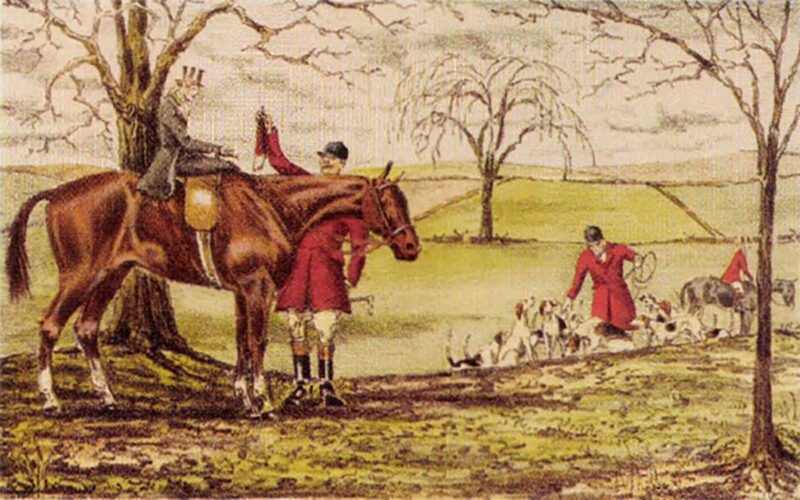
Diana Goes Hunting series.
Derrydale prints were designed more for sportsmen than for connoisseurs of fine art. They are more noteworthy for their accuracy of detail and their authenticity in capturing the spirit of the activity than their purely aesthetic qualities.
Sporting prints were by no means unknown in America when The Derrydale Press began issuing them in 1928. Currier and Ives had published many sporting prints in the 19th century, most notably reproductions of paintings by two English immigrants, Fanny Palmer and Arthur F. Tait. Harper’s Weekly frequently published wood engravings based on the paintings and drawings of Winslow Homer, A. B. Frost, Frederic Remington and other artists of note. Scribner’s published two well-regarded portfolios of colored prints of Frost paintings: Shooting Pictures in 1895 and A Day’s Shooting in 1903. All these images, however, were printed by mechanical means on inferior paper, and they are in no way comparable to the high-quality, limited edition prints issued by Deny dale.
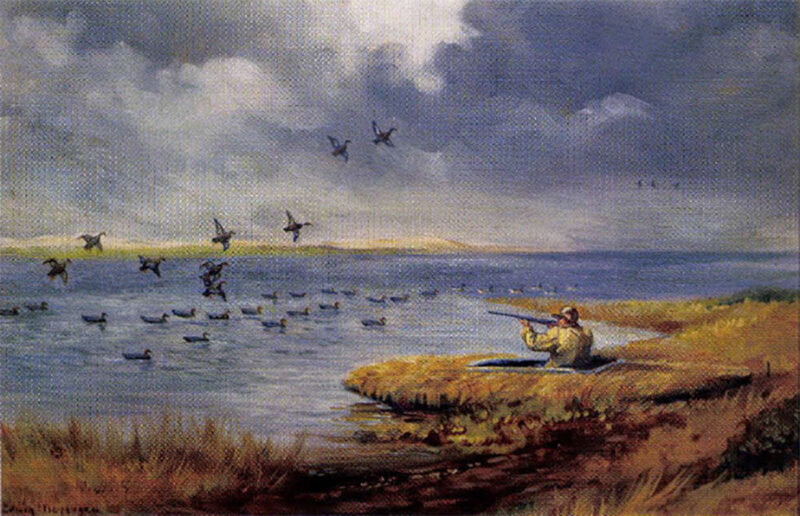
November Morn by Edwin Megargee
Continuing into 1942, Connett published 86 Derrydale prints for his customers as well as a dozen or so that were released as private commissions. When he dissolved the Press in 1942, he authorized his long-time associate, Frank Lowe, to carry on the print portion of the business, and Lowe would complete an additional 18 prints over the next six years. In all, 127 prints have some claim to being Derrydales.
Eugene Connett was a man of integrity, yet he was a frugal businessman. In addition to paying each artist for his efforts only as the print sold, he would send the prints to the colorist only as orders were received. Thus, he was able to avoid the expense of maintaining a substantial inventory. His initial expenses included the production of the plate, the cost of the paper and the associated cost in pulling the uncolored prints — all of which amounted to less than $100 back then. The prints were offered for only $25 to $35; today, most are worth 10 times that amount and some, Significantly more.
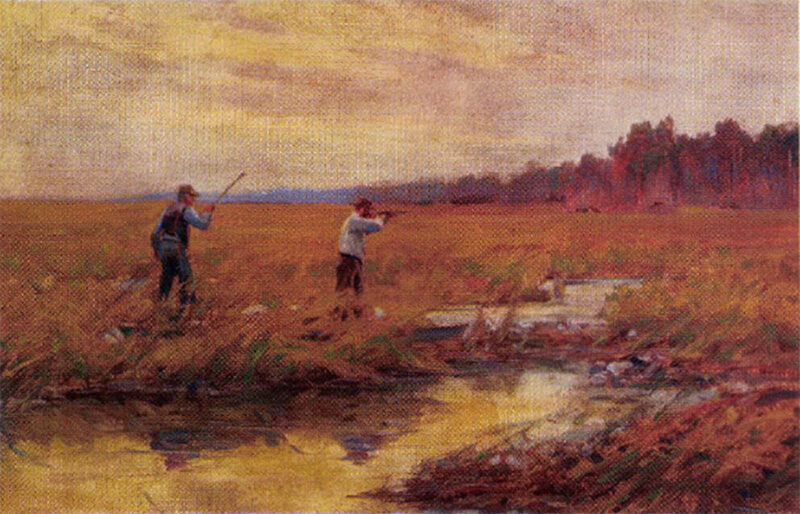
Maryland Marsh by John Frost
Although most Derrydale prints are hand-colored aquatints printed by the sheet-fed gravure process, the Press issued some pictures that were created by more traditional means. Etchings, drypoints and lithographs were usually sold uncolored and untitled. Most were, however, signed in pencil by the artist.
Producing aquatints was considerably more complicated. Through a photographic and chemical process, a metal plate was incised with the outlines of forms in the artist’s painting. An impression taken from the gravure plate would then go to Connett for his approval. If he was satisfied, the plate would go on toa craftsman who would hand-engrave the title, the name of the artist, the limitation of the edition, and the publisher’s name and address as a legend below the image.
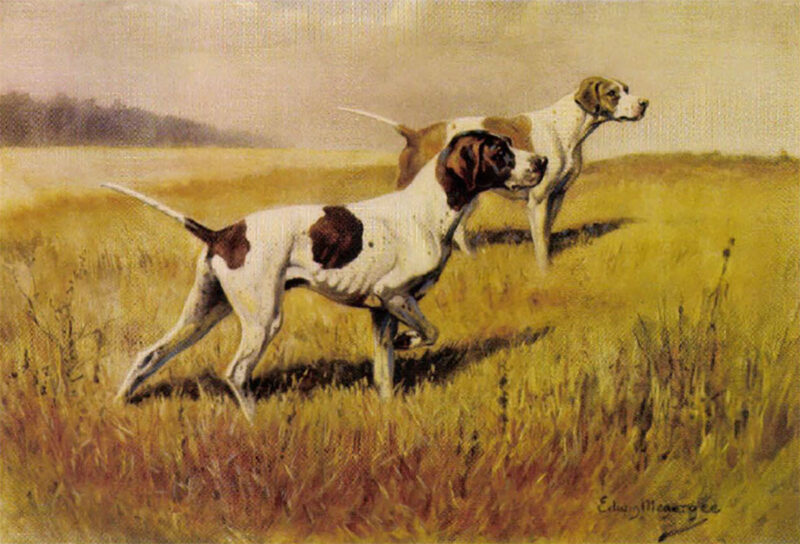
Bracemates by Megargee
Once a proof was approved by Connett, the full edition would be printed. Then, using watercolors, the artist would paint one or several prints, trying to match his original as closely as possible. These prints, then, would serve as models for colorists, skilled painters who would meticulously copy the image on dozens of prints. The artist’s signature on the completed print was taken as an indication that he accepted as accurate the colorist’s facsimile of his painting. The most well-known print series published by Derrydale arethe waterfowl pictures of the eminent sporting artist and writer Roland Clark. A Derrydale catalogue issued in 1937 announced with pride and satisfaction the publication of the first prints ever made of Clark’s paintings. Connett had already published two of Clark’s books — Stray Shots, a 1931 collection of fictional and autobiographical wildfowling stories and Gunner’s Dawn, a second volume of stories in 1937. He would publish a third book, Roland Clark’s Etchings, which include 70 intaglio prints (technically drypoints, not etchings), in 1938.
By 1937, Roland Clark was at the peak of his career as an artist, both in achievement and in popularity. From ’37 through ’41, Connett released two aquatints of Clark’s images, each of a single duck in flight, in editions of 250 each. The prints were signed and numbered by the artist.
In 1942, his last year as director of The Derrydale Press, Connett published Mallards Rising, an aquatint depicting nine mallards taking off from an icy marsh. It is considered to be one of the artist’s finest works and it stands as a quintessential Derrydale print.
Frank Lowe issued eleven more waterfowl prints, one in 1942 and two each year through 1947, blinging to 22 the total number of Clark aquatints. Although the Lowe Prints do not have the Derrydale name in the legend, they are generally considered to be equal in quality to those published by Connett.
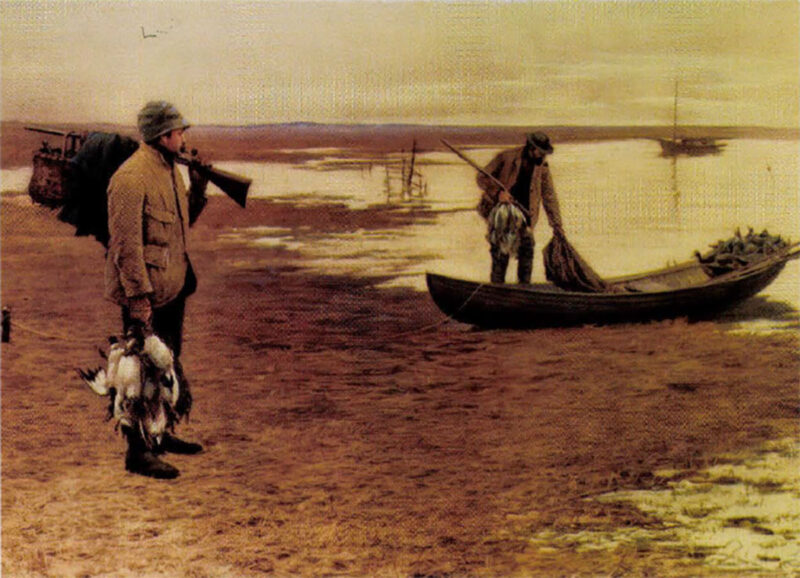
Coming Ashore by A.B. Frost
When The Derrydale Press was founded, Americans were enjoying post-World War I prosperity and many had the time and the money required to enjoy the fields of sport that were the province of Connett’s Press. The prosperity of the 1920s, however, came to an abrupt end with the Depression, and the market for sporting books and art experienced a sharp decline. Although Derrydale had built a strong product line, the Depression ended its growth. Eventually, largely because of Connett’s unwillingness to lower hiss standards of quality, the Press became a money-losing proposition that depleted his personal finances.
A second set of circumstances in the early 1940screated what Connett saw as an insurmountable problem. With the onset of World War II, the Press could no longer obtain the imported, top-grade all-rag paper he had been using for his books and prints. And so, with great reluctance, he liquidated The Press in early 1942. The books in inventory and related materials were sold to Crown Publishers, and the rights to all unsold prints he turned over to Frank Lowe.
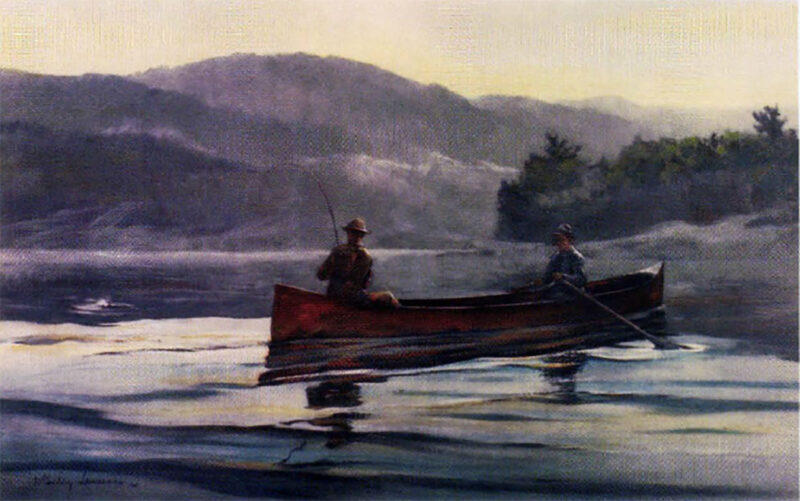
Rising Mists, a 1944 aquatint by W. Goadby Lawrence
In his first catalogue, Lowe wrote: “We wish to express our sincere appreciation at this time for the loyalty and support given us by our friends and patrons of past seasons, and we can assure them that the same high standard of quality and workmanship which has animated our work in the past will be continued perhaps improved as time passes.”
With this statement, Frank Lowe took unto himself the reputation established by The Pres sunder Eugene Connett’s management, and he allayed any concerns that customers might have had about the quality of future publications. Lowe ran the business for another six years, and the last prints that could make any claim to the Connett legacy were published in 1948.
The standards of excellence established and maintained by Eugene Connett remain unprecedented in the annals of sporting books and prints. No other publishing venture before or since has come close to matching all that he accomplished.
 Featured on these pages are more than 280 paintings dating from the early 1970s to today. You’ll join the artist on adventure-filled journeys across North America, Central America, Africa and Asia and discover a vast portfolio of wildlife, including lions, tigers, bears, white-tailed deer and more. You’ll enjoy his gripping and refreshingly honest accounts of the experiences that inspired his artwork. In his stories, Sieve shares his deep commitment to land and wildlife conservation practices and recounts his adventures observing, photographing and hunting his wild subjects. Buy Now
Featured on these pages are more than 280 paintings dating from the early 1970s to today. You’ll join the artist on adventure-filled journeys across North America, Central America, Africa and Asia and discover a vast portfolio of wildlife, including lions, tigers, bears, white-tailed deer and more. You’ll enjoy his gripping and refreshingly honest accounts of the experiences that inspired his artwork. In his stories, Sieve shares his deep commitment to land and wildlife conservation practices and recounts his adventures observing, photographing and hunting his wild subjects. Buy Now
